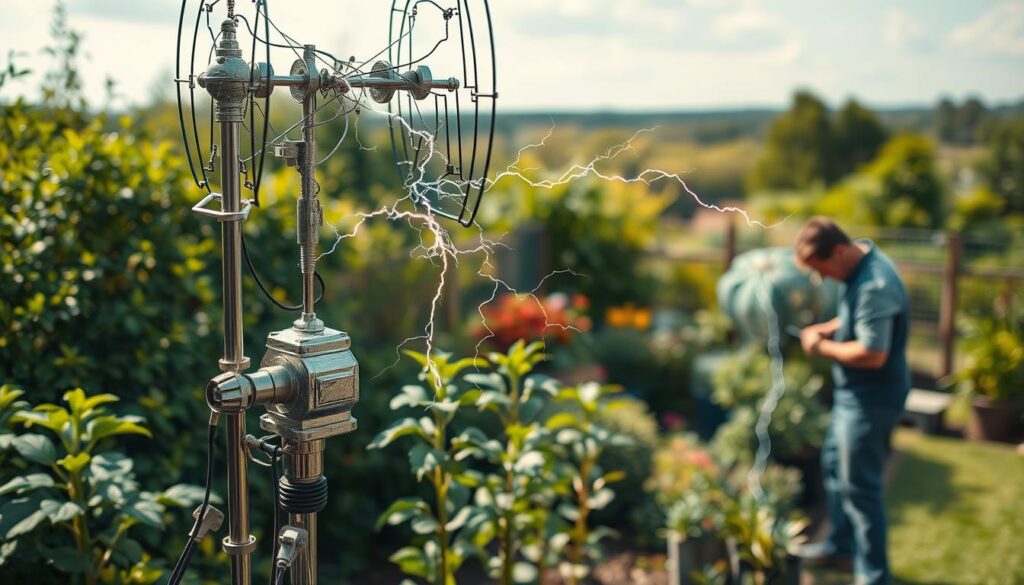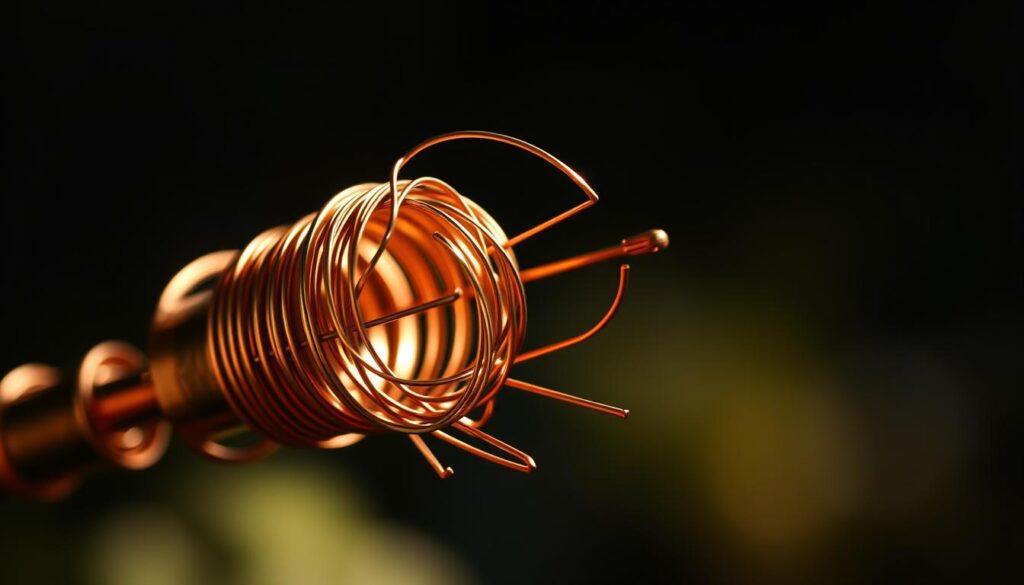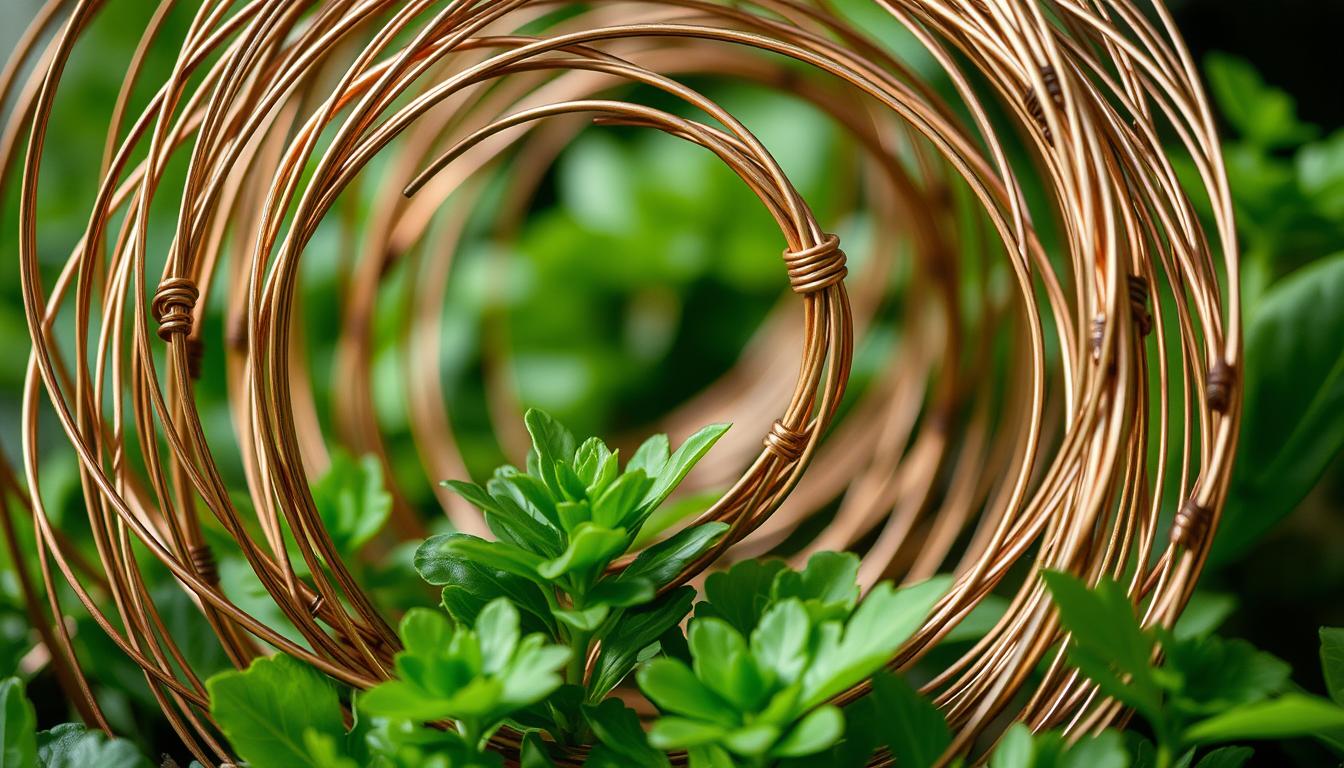Have you ever wondered if plants could thrive better with a little extra energy from nature? A unique gardening approach taps into atmospheric energy to enhance plant growth—without chemicals or complicated setups. Surprisingly, this method dates back centuries, with roots in 18th-century experiments.
By using simple materials like copper wire, brass, or wood rods, gardeners can channel natural electricity into the soil. Early pioneers, like Justin Christofleau, saw yields increase by up to 200%. Modern tests reveal similar benefits, including fewer pests and stronger drought resistance.
In this guide, we’ll compare three conductor types to see which works best. Whether you have a backyard garden or indoor pots, this technique adapts easily. Let’s explore how harnessing nature’s power can transform your gardening results.
Key Takeaways
- Uses natural atmospheric energy to boost plant health
- Historical method with proven results since the 1700s
- Materials like copper and brass act as natural conductors
- Can increase yields by up to 200% in some cases
- Works for both outdoor gardens and indoor plants
What Is Electroculture and How Does It Work?
Could invisible forces in nature actually help plants grow stronger? This method harnesses atmospheric electricity—energy naturally present in the air—to boost plant health. Simple conductors like copper brass rods or bronze tools channel this power into the soil, creating a subtle electrochemical exchange.
The Science Behind Atmospheric Energy
Plants interact with frequency and energy in ways we’re just beginning to understand. Telluric currents, or Earth’s natural electric flows, merge with metals to nourish roots. Zinc and copper setups act like batteries, converting air energy into nutrients.

Research shows iron tools may disrupt soil’s natural magnetism, while bronze or wood preserves it. Viktor Schauberger’s water vortex theories further support how energy transforms in nature.
Historical Roots: From Justin Christofleau to Modern Gardening
In the 1920s, Justin Christofleau stunned farmers with 25-foot wooden posts that doubled yields without fertilizers. His work proved air and earth could collaborate for growth. Today, experts like Yannick Van Doorne revisit these ideas with sustainable twists.
| Material | Role | Effect on Soil |
|---|---|---|
| Copper | Conducts energy | Enhances nutrient absorption |
| Zinc | Electrochemical partner | Balances pH |
| Bronze | Historical choice | Preserves magnetism |
Ancient practices like Ayurveda’s Prana or Chinese Chi mirror this concept—energy flows sustain life. Modern gardens can tap into the same principles, blending tradition with innovation.
3 Types of Electroculture Antennas to Boost Plant Growth
What if your garden could thrive with a simple energy boost from nature? These three setups harness atmospheric power differently, each suited for specific needs—whether you’re growing tomatoes outdoors or herbs indoors.

1. The Classic Copper Wire Design
Ideal for outdoor beds, this method uses thick copper wire (12–14 gauge) spiraled around stakes. It covers up to 20 feet, enhancing soil conductivity. Tests show faster germination and fewer pests.
For DIY versions, bury the wire 6 inches deep near roots. Commercial kits include zinc-coated rods for electrochemical balance.
2. The Paramagnetic Indoor Model
Perfect for potted plants, the CW4 Petite (10.3″ tall) combines a brass rod with a paramagnetic rock core. It generates subtle currents, mimicking outdoor conditions.
- Thermocouple tech: Converts temperature shifts into energy
- Solar wind collection: Enhances air purification
3. The Pyramid Energizer
This geometric design aligns with Earth’s frequency using the golden ratio. Place it over seeds or soil to amplify growth. Some users report doubled yields in arid climates.
Pro tip: Pair with crystals like quartz to magnify effects.
| Type | Best For | Key Feature |
|---|---|---|
| Copper Wire | Outdoor gardens | 20-ft coverage |
| Paramagnetic | Indoor pots | Brass telluric rod |
| Pyramid | Seed starting | Magnetic alignment |
How to Make Your Own Electroculture Antenna
Building your own energy conductor for plants is easier than you think. With basic materials and a little patience, you can create a system that taps into natural atmospheric power. Whether for garden beds or potted herbs, here’s how to get started.

Materials You’ll Need: Copper, Brass, and More
Gather these essentials:
- Copper wire (12–14 gauge for optimal conductivity)
- Brass fittings or rods (resists corrosion)
- Zinc-coated rods (balances electrochemical reactions)
- Wooden stakes (for outdoor support)
“Justin Christofleau’s 1920s designs used copper-zinc spirals atop wood—proof that simplicity works.”
Step-by-Step Assembly for Outdoor and Indoor Antennas
Outdoor Spiral Antenna:
- Wrap copper wire tightly around a wooden stake, leaving 6 inches buried near roots.
- Connect to a zinc rod using brass clamps for a voltaic effect.
Indoor Paramagnetic Model:
- Insert a brass rod into a paramagnetic rock-filled base.
- Place near sustainable gardening tools to amplify energy flow.
| Material | Cost (per foot) | Best Use |
|---|---|---|
| Copper wire | $0.50–$1.20 | Large gardens |
| Brass rods | $2.00–$3.50 | Indoor setups |
| Zinc-coated | $1.80–$2.50 | Soil pH balance |
Pro Tip: Treat wooden stakes with beeswax for outdoor durability. For poor conductivity, check connections with a multimeter.
Where and How to Place Your Electroculture Antenna
Small adjustments in placement can unlock big results for your garden. Whether you’re working with raised beds or indoor herbs, strategic positioning ensures energy flows efficiently to your plants.

Ideal Height and Direction for Efficiency
For outdoor setups, aim for a south-facing position. This captures northern electromagnetic currents, as proven by Justin Christofleau’s 6-meter designs. A simple rule: allow 1 foot of height per 10 square feet of garden space.
Bury copper components 6–8 inches deep near roots for optimal soil interaction. In windy areas, secure stakes with zinc-coated ties to prevent displacement.
“Aligning conductors with Earth’s magnetic field amplifies energy absorption,” notes Yannick Van Doorne, modern electroculture researcher.
Tailoring Placement to Your Garden
Potted plants thrive with miniature brass rods placed 2–3 inches from stems. For garden beds, prioritize depth—vegetables need 12-inch soil penetration, while flowers do well at 6 inches.
| Setting | Placement Tip | Material |
|---|---|---|
| Indoor pots | Near south-facing windows | Brass rods |
| Outdoor beds | Spiral wire around stakes | Copper + zinc |
| Vertical gardens | Attach to trellises | Bronze fittings |
In humid climates, elevate conductors to avoid rust. For arid regions, pair with water-retentive mulch to balance soil moisture. Clean copper parts annually with lemon juice to maintain conductivity.
Conclusion: Harnessing Nature’s Energy for a Thriving Garden
Nature holds hidden power to transform your garden’s potential. By using copper or brass tools, you tap into Earth’s natural energy, boosting plant health without chemicals. Tested methods show higher yields, richer soil, and fewer pests.
This approach saves money and supports the environment. Urban farms and home gardens alike can benefit. Try different setups—spiral designs for beds or rods for pots—to see what works best.
Ready for a challenge? Start a 30-day trial and observe the changes. Collaborate with nature’s forces, and watch your garden thrive like never before.

